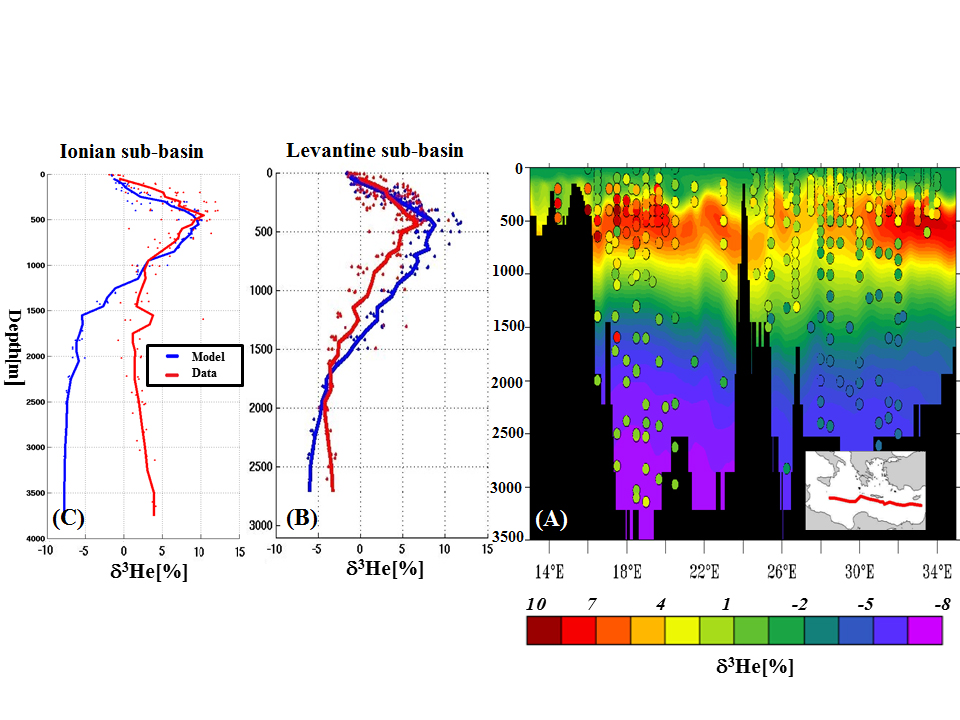Helium isotopes help to constrain high-resolution model dynamics in the Mediterranean Sea
The terrigenic helium isotope distribution was simulated for the first time in the whole Mediterranean Sea, using a high-resolution model (NEMO-MED12) at one-twelfth of a degree horizontal resolution (6–8 km).
Together with providing valuable constraints on the crustal and mantle helium fluxes, the simulations and their comparisons with observations provide a new technique for improving the dynamical regional model. This is clearly illustrated by the confirmation of the shortcomings of the model dynamics in representing the deep ventilation of the Ionian sub-basin…

Figure: Total δ 3He (sum of terrigenic, tritiugenic and atmospheric helium) model–data comparison along the Meteor M5 (September 1987) section. (a) Colour-filled contours indicate simulated δ 3He (%), whereas colour-filled dots represent in situ observations. (b) and (c): comparison of average vertical profiles for the Levantine and Ionian sub-basins, respectively; model results are in blue; red indicates in situ data. Click here to view the figure larger.
Reference:
Ayache, M., Dutay, J.-C., Jean-Baptiste, P., & Fourré, E. (2015). Simulation of the mantle and crustal helium isotope signature in the Mediterranean Sea using a high-resolution regional circulation model. /Ocean Science/, /11/(6), 965–978. doi:10.5194/os-11-965-2015
